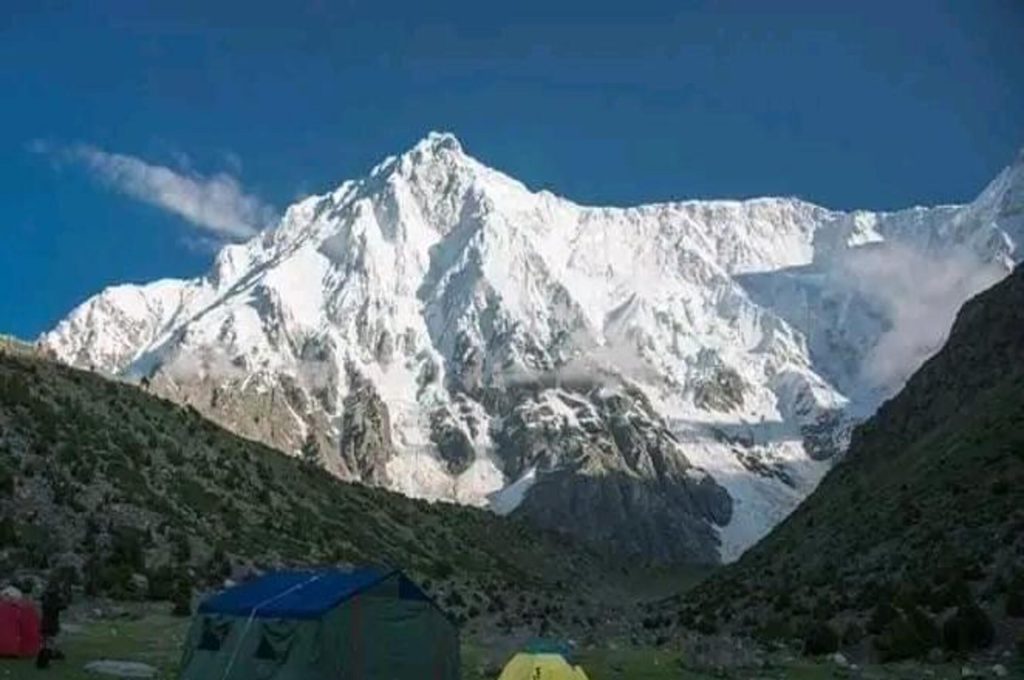
Chitral Gol National Park Trek
Chitral Gol National Park was declared a wildlife sanctuary in 1979 and a National Park in 1984. This 7750-hectare area lies just west of the Town of Chitral, encompassing the watershed of Chitral Gol. Chitral Gol National Park is surrounded by high Hindukush peaks and is a habitat of a number of wildlife like: Kashmir Markhor, Ibex, Snow Leopard, Lynx, Chakor, Ram Chakor, Pheasant and a large variety of birds and wild animals. National bird of Pakistan, Chakor, National animal, Markhor and National Tree, Diyar are also found in Chitral Gol National Park.
The trek that is frequently referred to as “Around Nanga Parbat” does not actually go “around” Nanga Parbat completely. Instead, it circumnavigates Nanga Parbat once, starting from Tarashing in the Rupal Valley on the southern side of the mountain. The path ascends the Rupal Valley to the west before turning north to cross the Mazeno La and arrive in Fairy Meadows.
With the help of Skardu Expeditions Tracks and Tours, you can showcase your abilities. Your landing in Islamabad marks the beginning of our 60-day K2 tour. All the preparations, such as airport pickup, briefings at the Ministry of Tourism, flying to Skardu, treks, acclimatisation, your arrival at the K2 base camp, and everything in between, will be handled by our incredibly passionate, committed, and experienced personnel.
One of five 8000-meter summits in Pakistan is Nanga Parbat (8125 m), the Great Himalayan range’s westernmost peak. This massive massif is made up of a 20 km long string of peaks and ridges. The name Nanga Parbat, which translates to “The Naked Mountain,” was given to it because of its lone, white look, which was visible from the south for at least 100 kilometres. Due to the challenges in reaching the peak, it is also known as the “Killer Mountain.” Herman Buhl, a German, made the first ascent in 1953, a nearly miraculous solo ascent without oxygen. Trekkers can see stunning up-close views on its cliff-like south face, known as the Rupal face, which rises almost 5000 metres from the valley floor to the summit.
The Astor Valley, which departs the KKH near Jaglot, 60 kilometres south of Gilgit, provides access to the Rupal Valley, which is located on the south side of Nanga Parbat. Incredible views can be found on short, simple treks in the Rupal Valley. Most of the population of Astor Valley are Sunni Muslims, although 25% of them are Shia Muslims and generally reside near the upper tributaries. The primary language is Shia, with Urdu serving as a second language for men. Few villagers are proficient in English.
| Day 01 | Arrive Islamabad airport and transfer to hotel |
| Day 02 | Drive to Chilas |
| Day 03 | Drive to Rumbur-Kalash valley |
| Day 04 | Trek to Chimisan Ghari |
| Day 05 | Trek to Dooni Ghari over the Pass |
| Day 06 | Trek to Gokhshal (2750m). Chitral Gol National Park. |
| Day 07 | Trek desce Trek descends down to Chitral town along the stream of the Chitral Gol |
| Day 08 | Fly to Peshawar. Afternoon visit to museum and Qissa Khawani. |
| Day 09 | Drive to Islamabad |
Equipment List
Equipment List We are providing you with three lists for the Trek. List 1 and 2 contain items and equipments that you must bring. The third list contains optional items you might need on your trekking holiday. Based on your own judgment you can select things that you might need from the third list.
1 – Must Bring Items:
- First Aid Pack (Diamox (Altitude), Dioralite (re-hydration salts), antiseptic cream, blister treatment, throat lozenges, plasters, Imodium (diarrhea treatment), painkillers)
- Hiking Backpack (Day Pack) 32-42 Litres
- Fleece jacket with hood or a warm jumper
- Mittens or gloves
- Gloves (Thermal)
- Headtorch with spare batteries
- Hiking boots
- Sleeping bag (-16°C comfort rated)
- Sandals (sports) or old shoes (to cross rivers)
- Sun protection cream (including total block for nose, lips etc.)
- Sunglasses
- Sunhat
- Thermarest or any similar mat/pad for sleeping
- Warm hat
- Warm jacket (down)
- Water bottles 1 liter (x2)
- Waterproof jacket
- Waterproof over-trousers
- Antibacterial hand wash
- Shirts/T-shirts
- Socks
- Spare laces
- Underwear (normal and thermal)
- Trekking poles (highly recommended)
- Wash-bag and toiletries
- Walking socks (2/3 pairs)
- Baselayer – leggings (Thermal)
- Trekking Trousers
- Baselayer thermal shirts (2 long sleeves, 2 short sleeves)
- Mountaineering equipment (See “List 2” below)
List 2 – Mountaineering Equipments:
- Crampons
- Mountaineering boots that must be compatible with your crampons. Minimum Grade B2.
- Ice axe
- Climbing harness
- Karabiner/Carabiner (screwgate type x 2)
- Climbing helmet
- Prusik loops X two (2) – (4 meters of 6 mm cord makes up 2)
- Sling (120 cm)
List 3 – Optional:
- Buff or scarf
- Small padlock (for locking your bag)
- Camera
- Insect repellant
- Pen-knife (important: pack sharp tools in hold luggage)
- Repair kit (e.g. thread, needle, duct tape)
- Liner (for sleeping bag)
- Travel clothes
- Bottle for Pee
